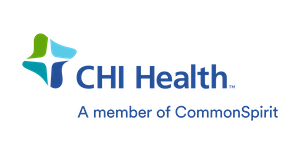Here at CHI, we are the only center in Nebraska to offer the full range of treatments for anterior and posterior sinus and nasal drip.
At this time there are 4 different types of procedures for sinus and nasal drip. Each of these therapies are directed towards the posterior nasal nerves. The posterior nasal nerves are small nerve endings at the back of each nostril that signal for your nose to run. Each of these procedures have varying degrees of efficacy, and not all of these procedures are right for everyone.
Cryotherapy
Cryotherapy for the posterior nasal nerves has been offered for multiple decades. Commercially available treatment options for this have been available for about 10 years. With this therapy, the nerve fibers that tell your nose to run are atraumatically frozen using a freezing wand. The procedure usually takes about 10 minutes per side, allowing time for numbing to take place when performed in the office.
Radiofrequency ablation of the posterior nasal nerves
Radiofrequency treatments for nasal congestion and removal of nasal lesions has been used for decades. Over the past 10 years, this treatment has been applied to the posterior nasal nerves to similarly treat anterior and postnasal drainage. The radiofrequency wand currently used can also be used to treat nasal congestion and improve nasal breathing.
Operative posterior nasal neurectomy
In individuals who are not a candidate for in office therapy, have had an adequate response to in office therapy, or simply do not want to undergo an in office procedure, there are surgical treatments. Of these therapies for chronic nasal drip, the most common is operative posterior nasal neurectomy. Like in office treatments, this treatment targets the posterior nasal nerves. In this procedure, the nerve endings are divided in the operating room and a piece of artificial tissue placed to prevent regrowth. This is usually a day procedure, performed at the ambulatory surgery center. The procedure takes about 90 minutes to treat both sides, and is usually very well-tolerated.
Vidian neurectomy
The posterior nasal nerves originate from a larger structure called the vidian nerve. In this procedure the larger nerve is divided, and the opening from which it exits is packed to prevent regrowth. This procedure is reserved for individuals with severe, refractory anterior and/or nasal drainage. This is also a day procedure usually performed in the amatory surgery center.
